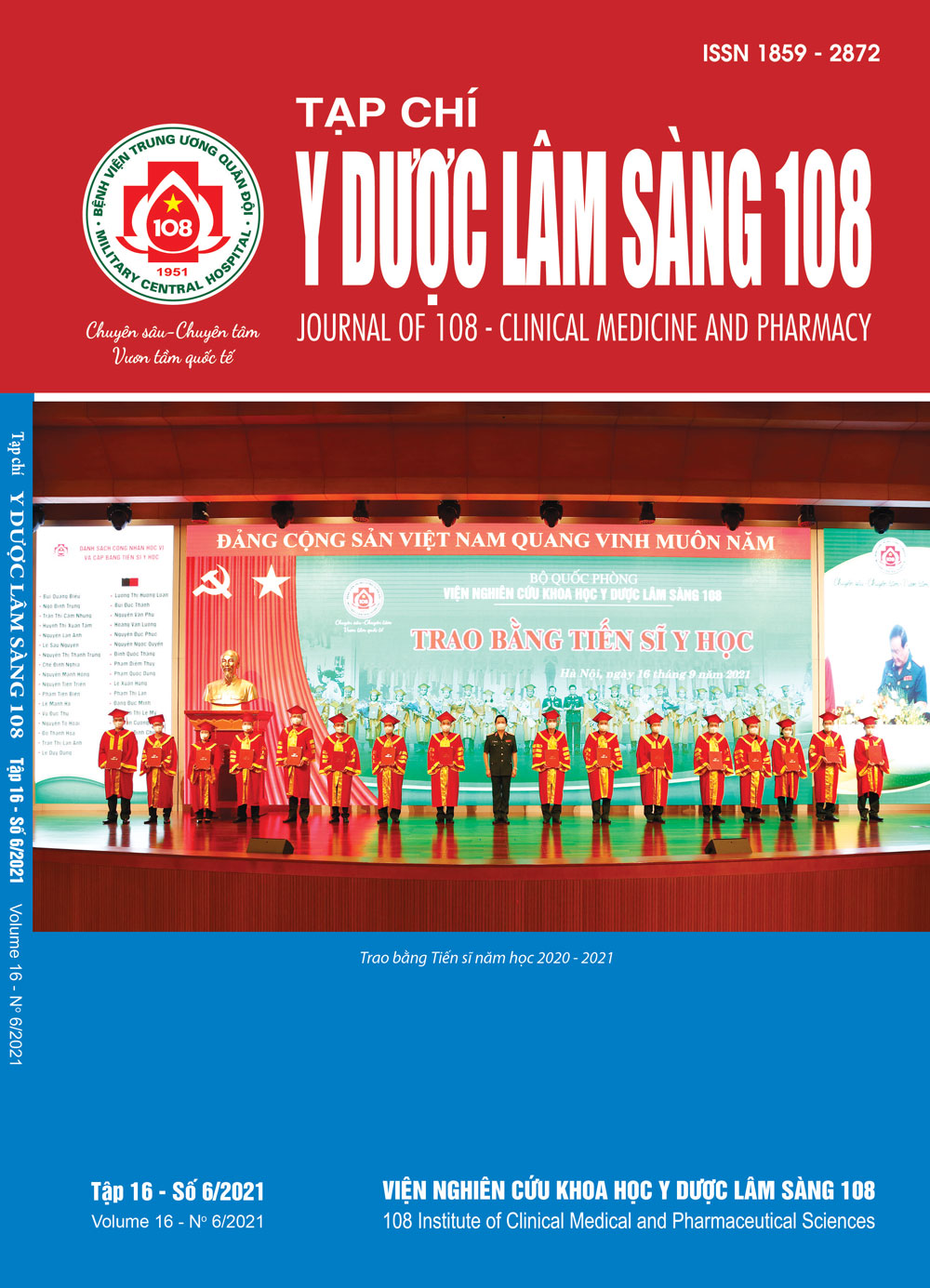Relationship between heart rate variability and new-onset atrial fibrillation following coronary artery bypass grafting
Main Article Content
Keywords
Abstract
New-onset atrial fibrillation (AF) is common form of rhythm disturbance following coronary artery bypass grafting (CABG) surgery. It is still unclear which factors have a significant impact on its occurrence after this procedure. The relationship between preoperative low heart rate variability (HRV) and AF after CABG surgery has been investigated with divergent results. Objective: To evaluate clinical predictors of postoperative atrial fibrillation (POAF) after myocardial revascularization. Subjet and method: The study involved 119 consecutive patients who underwent the first CABG operation without baseline AF. All subjects underwent assessed with 24-hour Holter recordings 2 days preoperative and 7 days, 3 months, 6 months postoperative at Hanoi Heart Hospital from 6/2016 to 8/2018. Result: The incidence of POAF varies from 13.7% (7 days), to 13.8% (3 months) and to 17.2% (6 months). The incidence of pre and postoperative low HRV varies from 28.6% (preop) to 51.8% (postop 7 days), 19.6% (postop 3 months) and 12.7% (postop 6 months). In which, reduced HRV preoperative had the risk of developing POAF 3.04 - 4.3 times (p<0.05). Multivariate logistic regression analysis was used to identify the following independent clinical predictors of POAF: Diabetes mellitus (RR = 0.16, 95%CI: 0.03 - 0.76; p<0.05), preoperative with low HRV (RR = 3.02, 95%CI: 1.01 - 8.96, p<0.05). Conclusion: Preoperative with low HRV was pedict a risk factor for POAF following coronary artery bypass grafting.
Article Details
References
2. Crawford MH, Bernstein SJ, Deedwania PC et al (1999) ACC/AHA Guidelines for Ambulatory Electrocardiography. A report of the American College of Cardiology/American Heart Association Task Force on Practice Guidelines (Committee to Revise the Guidelines for Ambulatory Electrocardiography). Developed in collaboration with the North American Society for Pacing and Electrophysiology. J Am Coll Cardiol 34(3): 912-948.
3. Tatsuishi W, Adachi H, Murata M et al (2015) Postoperative hyperglycemia and atrial fibrillation after coronary artery bypass graft surgery. Circ J 79(1): 112-118.
4. Kertai MD, Li YJ, Ji Y et al (2015) Genome-wide association study of new-onset atrial fibrillation after coronary artery bypass grafting surgery. Am Heart J 170 (3): 580-590.
5. Takeshi Kinoshita, Tohru Asai, Takako Ishigaki et al (2011) Preoperative heart rate variability predicts atrialfibrillation after coronary bypass grafting. Ann Thorac Surg 91: 1176-1182.
6. Lombardi F, Colombo A, Basilico B et al (2001) Heart rate variability and early recurrence of atrial fibrillation after electrical cardioversion. J Am Coll Cardiol 37(1): 157-162.
7. Schulman S, Cybulsky I and Delaney J (2015) Anticoagulation for stroke prevention in new atrial fibrillation after coronary artery bypass graft surgery. Thromb Res 135(5): 841-845.
 ISSN: 1859 - 2872
ISSN: 1859 - 2872
